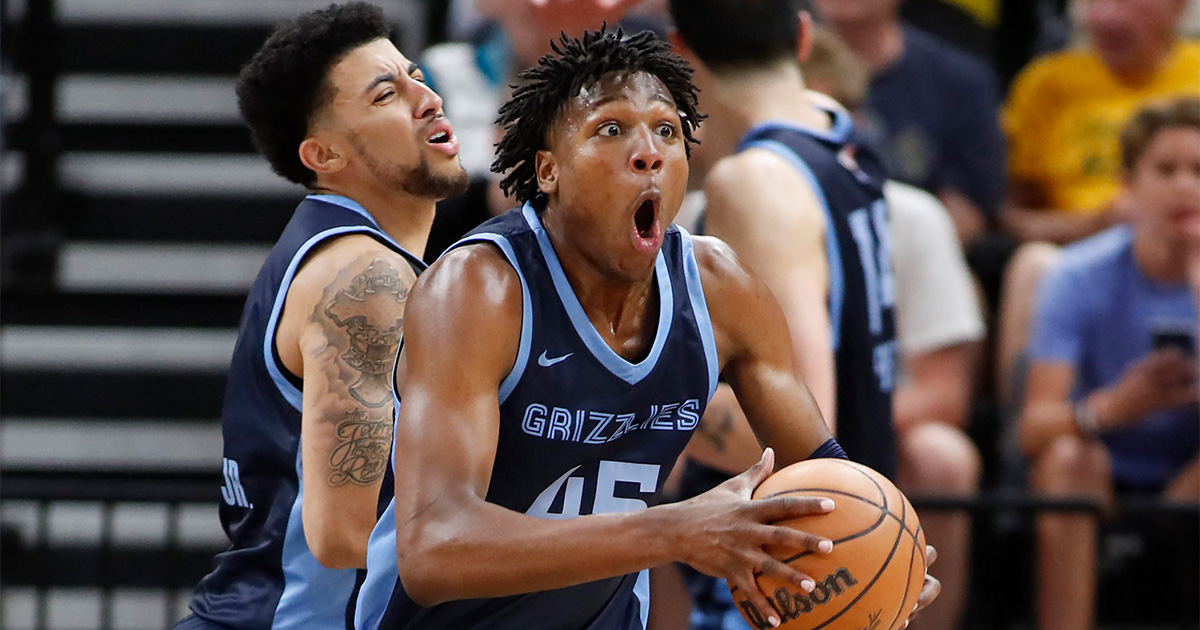It’s been an intriguing off-season so far for Brad Stevens and the Boston Celtics.
Three months after stepping into the role of president of basketball operations following Danny Ainge’s retirement, Stevens wasted no time in tweaking the roster into his liking, executing the following trades so far:
| Trading Partner(s) | Celtics Receive | Celtics Send |
| Oklahoma City Thunder | Al Horford, Moses Brown, 2023 second-round pick | Kemba Walker, 2021 first-round pick (16th overall), 2025 second-round pick |
| Atlanta Hawks, Sacramento Kings | From the Hawks: Kris Dunn, Bruno Fernado, 2023 second-round pick (via the Portland Trail Blazers) | To the Kings: Tristan Thompson |
| Dallas Mavericks | Josh Richardson | Moses Brown* |
| Memphis Grizzlies | Juancho Hernangomez | Kris Dunn, Carsen Edwards, 2026 second-round pick swap |
| New York Knicks | Trade exception | Evan Fournier, 2022 second-round draft pick (via the Charlotte Bobcats, top-55 protected), 2023 second-round draft pick |
Five trades with six teams is a big number even during the regular season itself and the wiggle room that the Celtics gained salary-cap wise will help them remain as active players in the trading and free agent markets moving forward. That both Moses Brown and Kris Dunn never got to step on the court for Boston is not uncommon in the NBA, but it adds credence to the speed of things over the course of just a few months.
Apart from the swaps, the Celtics have also signed Enes Kanter ($2.64 million), Dennis Schroder ($5.89 million), and Sam Hauser (two-way contract) to one-year deals. These are on top of the extensions the Celtics handed out to some of their key rotation players. They recently signed Robert Williams to a four-year, $54-million extension, while they also handed Marcus Smart a four-year, $77-million extension that will kick in during the 2022-2023 season and lock him in for around $90 million until 2025-2026. After trading for Josh Richardson, they also struck a two-year, $24 million deal with the Oklahoma native.
Thanks to most of those transactions, the 17-time NBA champions will easily offset the departures of Evan Fournier and Semi Ojeleye, who are now with the New York Knicks and the Milwaukee Bucks, respectively. Fournier, in particular, never found his footing in Boston especially after his historically atrocious 0-for-10 shooting debut back in March. Ojeleye provided size and some occasional offense, but with Williams’ development and Kanter’s presence on the boards, Boston may be looking at a frontcourt by committee, especially with Horford not getting any younger.
Kemba Walker also followed Fournier to the Knicks, signing what is reported to be a two-year, $8-million contract after being waived by the Oklahoma City Thunder. That Walker was traded by Boston just two seasons after he signed a four-year, $141-million contract goes to show how quickly the current Celtics management wanted to move on from him.

Player transactions aside, Boston’s hiring of Ime Udoka as the head coach to replace the promoted Stevens is an interesting choice. Udoka, who comes from the Gregg Popovich coaching tree and has spent time with USA Basketball, the San Antonio Spurs, Brooklyn Nets, and the Philadelphia 76ers, will certainly bring some influences from his past stints, but early on, he knows it would be best to tweak it around the Celtics’ best players.
Taking all these moves together, it seems as if Boston’s identity remains the same. If Stevens’ goal was to put his stamp on this roster, he certainly achieved that goal in a span of less than four months. While the names within the roster may have changed, the team’s personality still looks the same on the surface: a gritty defensive team that will rely on Jaylen Brown and Jayson Tatum to generate offense.
Sure, the Celtics want to maximize the best years of Brown and Tatum (especially since they are still signed to relatively cap-friendly contracts) and have made changes to do so, but the players they signed can more or less do what’s been done last season. Perhaps his plan is to get better people to achieve his vision, and with a team-oriented coach in Udoka, it certainly may become a reality.
Stevens’ style has had its success, as Boston has made seven consecutive trips to the postseason, but it seems as if they falter in the latter stages of the playoffs. The changes instilled could help Boston get over that proverbial hump or it could set them back, depending on both controllable and uncontrollable factors and how the team manages to weather those storms.

With all the new faces coming into training camp, there will definitely be some growing pains especially during the first few games of the 2021-2022 season. It does help that both Horford and Kanter are on their second stints with the Celtics so they should bring some sense of familiarity. However Horford’s age and Kanter’s well-documented defensive liabilities will give opposing teams areas to exploit.
All things considered, Brad Stevens and the Boston Celtics aren’t done yet. They certainly feel the pressure that comes with being in Boston, which is pretty much a titletown across various professional sports. They can make all the moves in the world, but the pressure won’t stop unless they bring a title back to the city of Boston.















